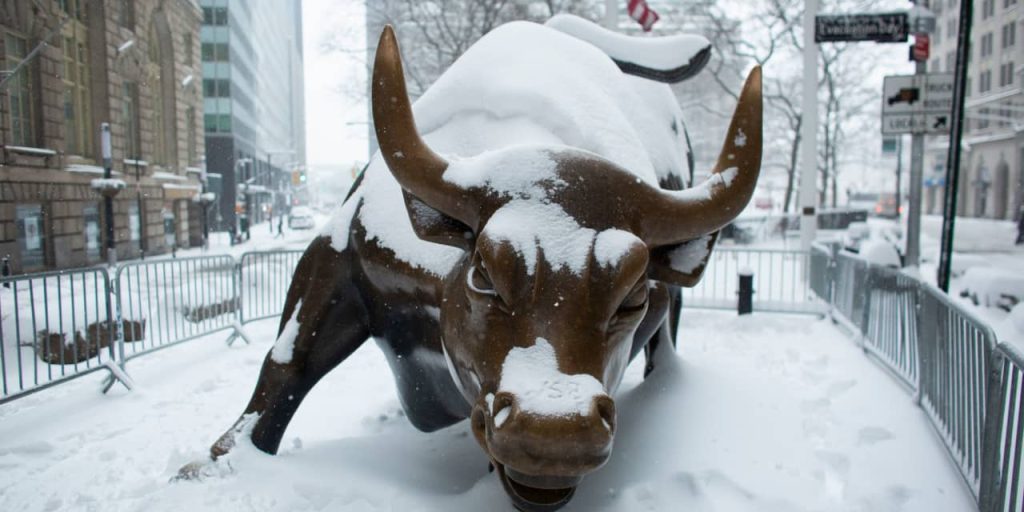Ford Motor Credit and Toyota Motor Corp. were among roughly a dozen big companies embarking on roughly $26.5 billion corporate-bond borrowing spree on the first trading day of 2024.
Ford’s
F,
financing arm, Toyota
7203,
TM,
Duke Energy Corp.
DUK,
and Deere & Co.
DE,
were among the U.S. investment-grade companies rushing to raise fresh debt on Tuesday, according to Informa Global Markets.
While the start of each year typically spurs a wave of corporate borrowing, this January looks a little different. That’s because bond investors have been enjoying some of the highest yields in a decade, despite a retreat from peak October levels, but also could soon face a Federal Reserve pivot to rate cuts.
“January is historically a pretty strong month for supply,” said Shannon Rinehart, portfolio manager at Columbia Threadneedle, while pointing to the roughly $26.5 billion of new investment-grade issuance on Tuesday.
Rinehart said the Fed’s signaling in December that its policy rate may have peaked appears to be spurring a fear of missing out among investors, helping boost the demand side of the equation, even as her team forecasts a robust $45 billion to $60 billion of new investment-grade bond supply to emerge over the month.
See: Prospective rate cuts hinge on inflation progress, economic outlook: Richmond Fed’s Barkin
Returns in the sector have vastly improved from just a few months ago, with the ICE BofA U.S. Corporate index now on pace for a 8.4% one-year return, while the benchmark Bloomberg U.S. Aggregate was pegged at a 5.28% one-year return, according to FactSet.
“The one mistake I would say people are probably making is the continued bet on either T-bills, CDs or bank deposits,” said Phillip Toews, chief executive officer and co-portfolio manager at Toews Asset Management, in an interview Tuesday.
Toews argued that if inflation is benign, history shows that both investment-grade and high-yield corporate bonds have done very well in periods when the Fed has eased monetary policy.
“People need to be more optimistic about the opportunities in bonds and not be married to money markets right now,” Toews said.
Money-market funds got a big boost from outflows from bank deposits amid last March’s banking crisis, which helped the sector end 2023 with near-record levels of assets, at $5.9 trillion, according to the Investment Company Institute.
Fed chair Jerome Powell surprised investors in December by saying the central bank doesn’t want to make the mistake of keeping rates high for too long, while also penciling in three rate cuts in 2024. That could mean investors quickly see 5% returns in Treasury bills and other “cashlike” investments evaporate.
Related: Fed could be the Grinch who ‘stole’ cash earning 5%. What a Powell pivot means for investors.
Hopes for a soft landing by the U.S. economy and for a Fed pivot have helped fuel a sharp retreat in the benchmark 10-year Treasury yield
BX:TMUBMUSD10Y,
which helps ease borrowing costs and boosts bond returns.
See: ‘One of the most aggressive rallies’ in markets in decades flipped bond losses into 2023 gains, Deutsche Bank chart shows
Still, companies likely aren’t yet feeling the full lag effect of the Fed’s policy rate sitting at a 5.25%-to-5.5% range, which could still bite into corporate earnings.
“A sub-4% 10-year Treasury yield would help,” Adam Turnquist, chief technical strategist at LPL Financial, told MarketWatch. “But we are not going to an ultralow era of interest rates.”
But Turnquist also sees a weaker dollar
DXY
in recent months as an offset to higher interest rates, especially since a large slice of U.S. corporate earnings are fetched abroad. “The weaker dollar helps with the bottom line for companies.”
The 10-year rate was near 3.95% on Tuesday, close to where it began 2023, after briefly surging to 5% in October.
The yield on the ICE BofA US Corporate index was last pegged at 5.14%, after hitting 6.3% in October, and sitting for much of the past decade below 4%, according to Fed data.
Stocks ended mixed Tuesday, with the Dow Jones Industrial Average
DJIA
posting another record close, but the S&P 500 index
SPX
and Nasdaq Composite Index
COMP
ending lower to kick off January. Equities opened lower on Wednesday.
Read the full article here







